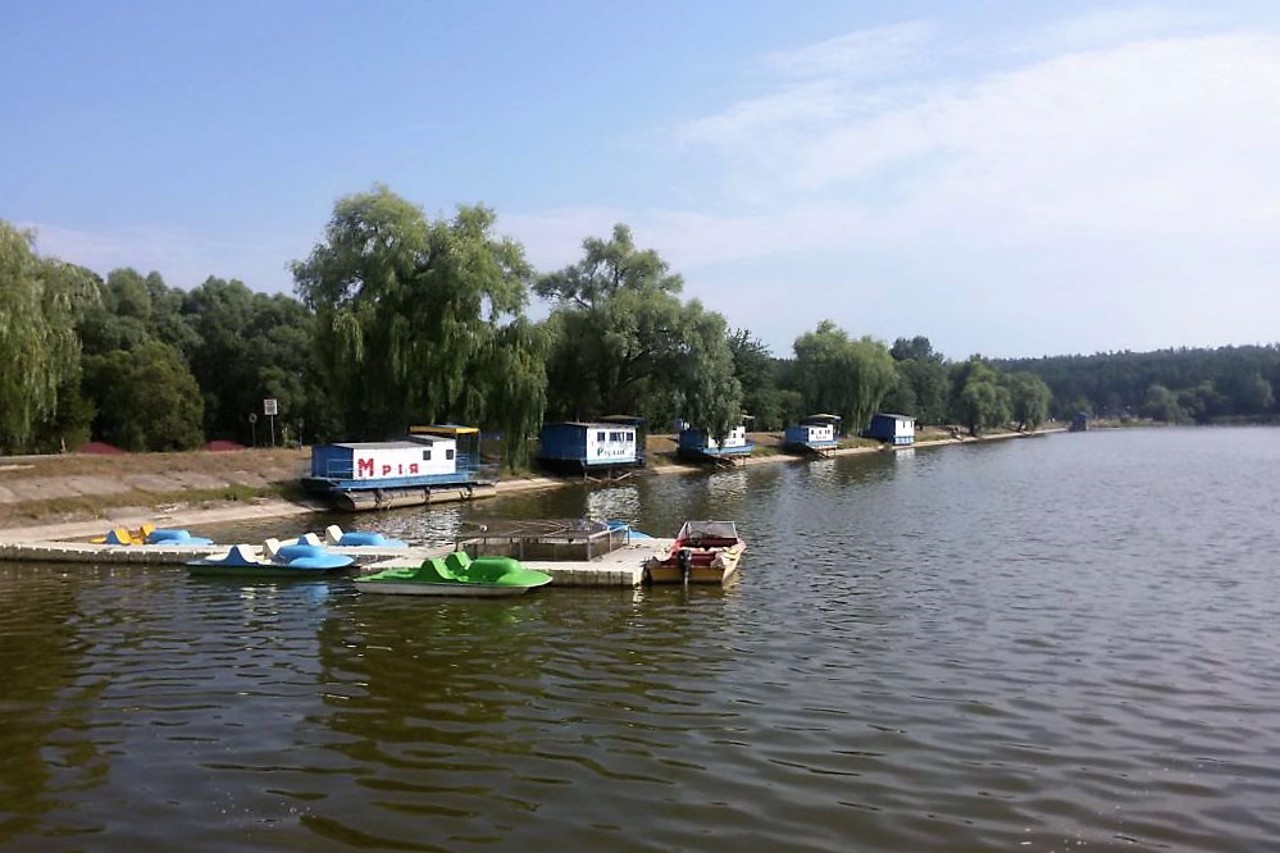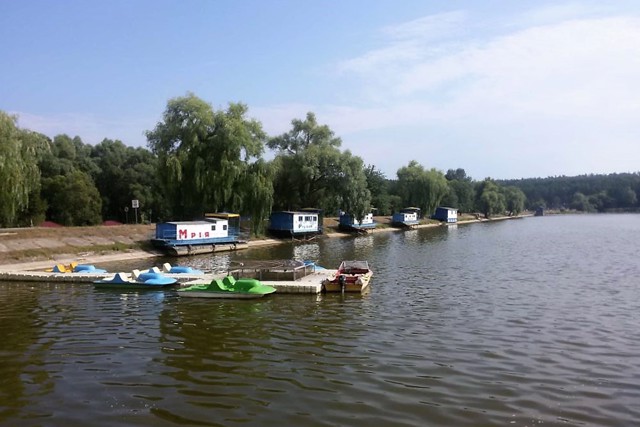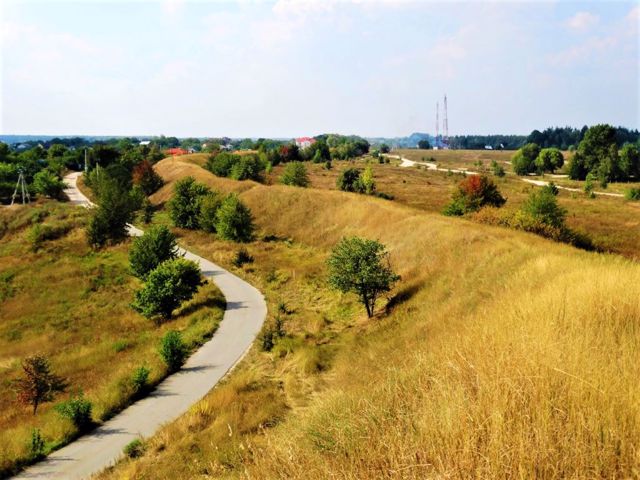Functional temporarily unavailable
General information about Kruhlyk
The resort village of Kruhlyk on the banks of large ponds on the Siverka River is located next to the Odesa highway E-95 near Kyiv.
It has been known since 1699.
The village is located in the center of an oval (circle) formed by the remains of the Scythian ramparts of the Khodosiv hillfort, which is where the name comes from.
Nice recreation area by the lake.
Курортне село Круглик на берегах великих ставків на річці Сіверка розташоване поруч з Одеською трасою Е-95 під Києвом.
Відоме з 1699 року.
Село знаходиться в центрі овалу (кола), утвореного залишками скіфських валів Ходосівського городища, звідки пішла назва.
Приємна зона відпочинку біля озера.
Сплануй своє перебування у Kruhlyk
What to see and where to go in Kruhlyk
Tourist attractions and museums of Kruhlyk
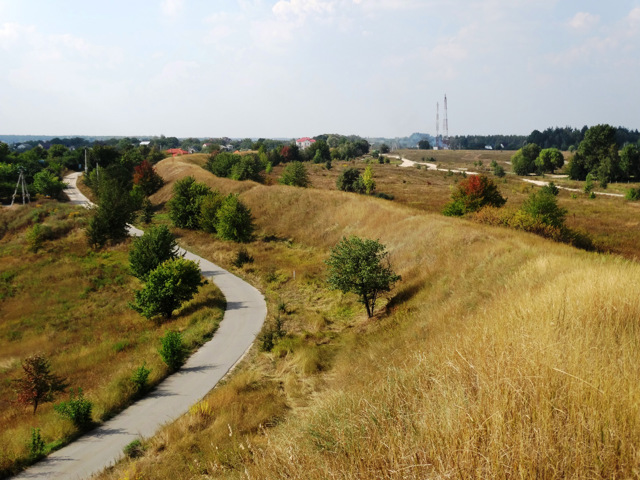
Serpent's Wall (Great Khodosivka Hillfort)
Historic area
The Great Khodosivka Hillfort (Kruhlyk Settlement) is located on the southern outskirts of Kyiv between the villages of Khotiv, Lisnyki, Khodosivka, and Ivankovychi. Inside the settlement are the villages of Kruhlyk and Kremenishche.
This is one of the three giant hillforts of the forest-steppe of Ukraine, an archeological monument of national importance, which is part of the Khodosivka archaeological complex and is part of the Serpent's Wall system.
The settlement belongs to the early Iron Age (VI–V centuries BC). It was a settlement of Scythian ploughmen, surrounded by a protective rampart with a total length of 10-12 kilometers. Now this rampart has a height of up to 8 meters, in some places a defensive ditch can still be seen along it. In the days of Kyivan Rus', the rampart of the hillfort was built into the system of the Serpent's Wall (Zmiyevi valy) as the last line of defense in front of Kyiv.
The remnants of the Ancient Rus' system of earthen fortifications, located on the southern outskirts of Kyiv and in other places on the territory of the Middle Dnieper region, are called snake ramparts. Their total length, according to various estimates, reaches from 900 to 1500 kilometers. Presumably, the ramparts served to protect the southern borders of the Kyiv state from nomads. The history of their construction and functions have not been sufficiently studied.
The legend tells about the legendary hero Mykyta KozhemIaka, who harnessed the Zmiy Horynych (Slavic dragon, snake) to a plow and plowed giant furrows, from which the name of the wall came.
According to archaeologists, most of the Serpent's Wall were built in the X-XI centuries. Earth ramparts with wooden structures inside were up to 15 meters high, and were fortified with a wooden palisade along the crest. They formed a front in the direction of the steppe - to the south and southeast. At least 4,000 construction workers were to participate in the construction work, and the work could last about 4-5 years.
Fragments of the Serpent's Wall have been preserved along the tributaries of the Dnipro: Vita, Chervona, Stuhna, Trubizh, Sula, Ros and others. One of the best places to look is the section of the shaft on the road from Kruhlyk to Ivankovychi. There is a parking lot nearby. A wooden sign mistakenly indicates that these are Cossack ramparts of the 16th century.
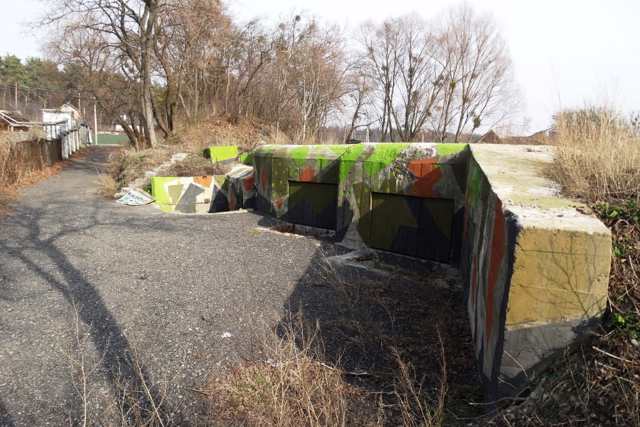
Pillbox 152
Castle / fortress
Two-story artillery and machine-gun caponir No. 152 in Kruhlyk - one of the three artillery Pillboxs of the Kyiv military district.
Equipped on an earthen rampart of the Kruhlyk hillfort. With his two 76-millimeter cannons of the model of 1900, he shot through the valley of the river Siverka (Vyta) and the road from Kruhlyk farm to Vyta-Poshtova. With machine gun fire from the embrasure, he controlled the bridge on the Ivankovichi - Khotiv road from the reverse side.
DOT 152 was taken on August 4, 1941.
One of Robert Durlacher's 1912 artillery carriages has been preserved inside.
Kruhlyk in news and blogs
Reviews Kruhlyk
Geographical information about Kruhlyk
| {{itemKey}} | {{itemValue}} |
|---|---|
| Region |
Kyiv |
